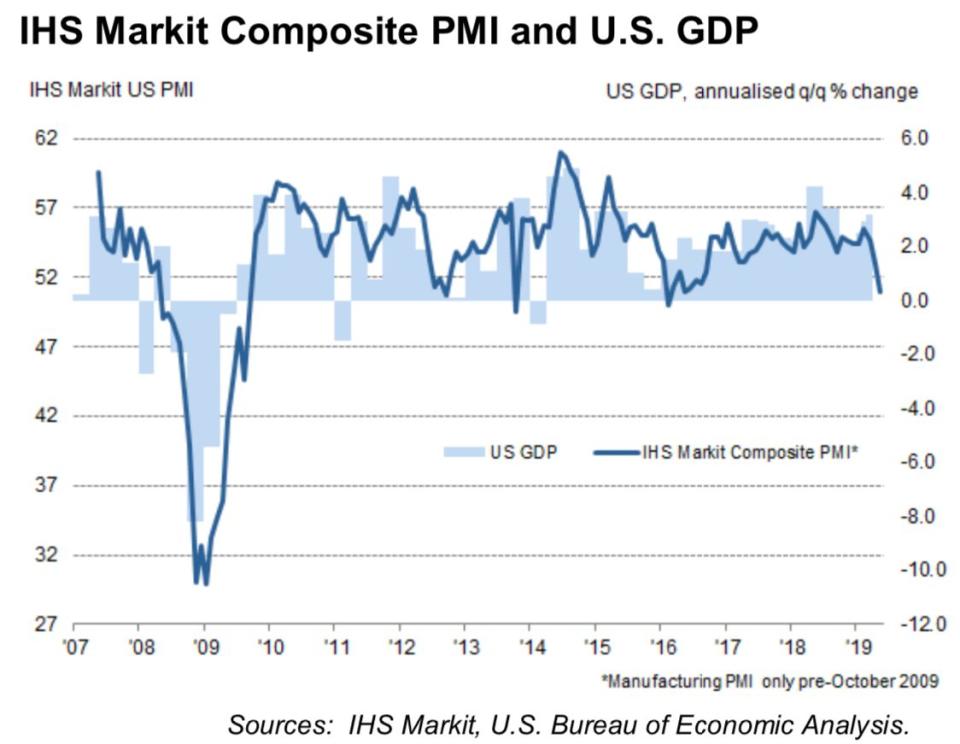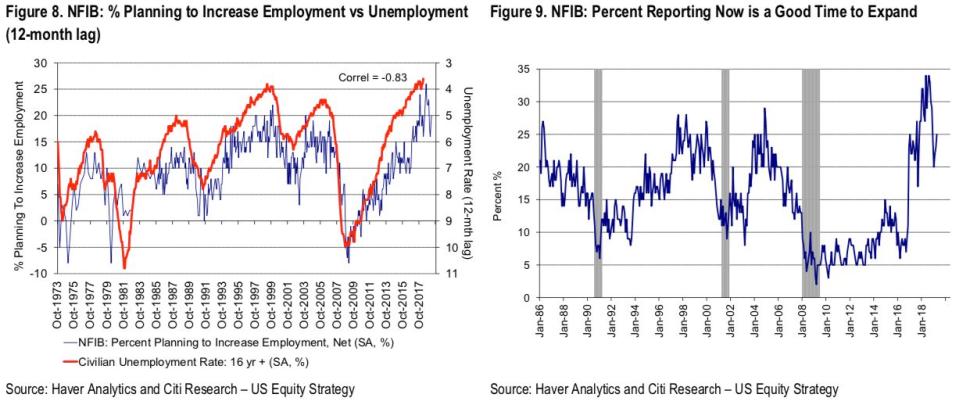The most grim sentence about the economy we've heard in weeks
“Worse may be to come,” said Chris Williamson, IHS Markit’s Chief Business Economist.
This grim statement came on Thursday in response to the latest IHS Markit Flash U.S. Purchasing Managers Index (PMI) report, which showed growth among U.S. manufacturers and services businesses plunged to a three-year low this month.
Specifically, the composite output index dropped to a low of 50.9 from 53.0 in April. Any reading above 50 signals growth, which means the index is very close to signaling an outright contraction in activity.
Williamson’s statement is a stark contrast to other forecasts suggesting that the unfavorable business conditions stemming from the trade war would be transitory. He explained his gloomy outlook by noting “inflows of new business showed the smallest rise seen this side of the global financial crisis.”

“Growth of business activity slowed sharply in May, as trade war worries and increased uncertainty dealt a further blow to order book growth and business confidence,” he said.
“Business confidence has meanwhile slumped to its lowest since at least 2012, causing firms to tighten their belts, notably in respect to hiring,” he continued. “Jobs growth in May was the weakest seen for over two years.”
“Bad” durable goods follows “crummy” retail report
The troubling message of the PMI data was echoed in Friday’s disappointing durable goods report, which showed orders fell 2.1% in April. Non-defense capital goods order excluding aircraft, which is a proxy for business spending, fell 0.9%, which was much worse than the 0.3% decline expected.
“We had expected that manufacturing would show a clear upturn in April,” said Samuel Coffin, an economist for UBS. “Today’s report on durable goods leans heavily on the side of ongoing decay.”
“The damage to the factory sector from last year’s tariffs was more prolonged than earlier data had suggested, and that the factory sector was weaker than we knew coming into the new May tariffs,” he added.
JPMorgan Chase economist Michael Feroli shared that sentiment.
“Coming on the heels of last week’s crummy April retail sales report, it suggests second quarter activity growth is sharply downshifting from the first quarter pace,” Feroli said. In the note, he added that he is now forecasting Q2 annualized real GDP growth of 1.0%, down from a prior projection of 2.25%.
The “two scariest charts”
The bad news is also appearing in the financial markets, with the S&P 500 (^GSPC) down around 5% from its May 1 high of 2954. The underperformance of internationally exposed stocks provide clear confirmation that sour stock market sentiment reflects uncertainty brought on by the U.S.-China trade war.
In a note to clients last week, Citi equity strategist Tobias Levkovich had argued that the market was “balanced between good and worrisome indicators.”
But the forward-looking message from small businesses yielded what he called “the two scariest charts for us to consider.”

According to NFIB Small Business Economic Trends survey data, a recent drop in the percentage of small businesses planning to increase employment portends an increase in the national unemployment rate.
Also, the percentage of small businesses saying now was a good to to expand has also dropped from its recent high.
To be fair, the NFIB metrics continue to signal optimism among small businesses. Still, the trends are worth watching, especially since small U.S. businesses tend to be less exposed to international markets and by extension the deteriorating trade policy outlook.
—
Sam Ro is managing editor at Yahoo Finance. Follow him on Twitter: @SamRo
Read more:
UBS warns of a 'major surprise this year' that'll send stocks down 9%
How Charlie Munger pulled Warren Buffett away from 'cigar butt' investing
Warren Buffett decries accounting rule change that has made a mess of Berkshire's earnings
Read the latest financial and business news from Yahoo Finance
Follow Yahoo Finance on Twitter, Facebook, Instagram, Flipboard, SmartNews, LinkedIn, YouTube, and reddit.